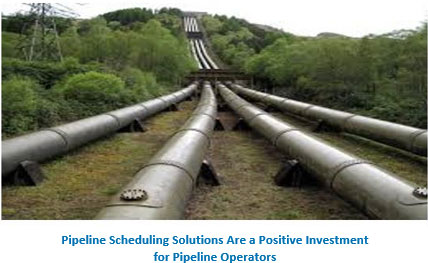




ARC has been conducting research related to oil & gas technology for over two decades. Recently ARC conducted detailed research specifically for Pipeline Scheduling Solutions. Based on this research, ARC analysts have developed a comprehensive set of criteria to help you select the best pipeline scheduling solution available in the market.
Pipeline scheduling solutions continue to develop and evolve as an increasing number of pipeline operators and transporters now view automation of the scheduling operations as a positive investment in productivity, operational and profitability improvements, all being done with increasingly reduced staffing levels due to “the Great Crew Change” and layoffs experienced during the extended decline in oil prices. Pipeline operators are realizing that reliance on manual approaches or legacy pipeline scheduling solutions is no longer sustainable in today’s margin-compressed markets, especially when relatively cost-effective automated pipeline scheduling solutions are readily available.
 Less industrialized countries continue efforts to grow their economies and meet the expected long-term increases in energy consumption in the coming years. Although the upstream oil & gas market had looked like it emerged from the “lower for longer” challenges, more recent price pressure has reminded international oil companies (IOCs), national oil companies (NOCs), and independent E&P firms that cost containment is still a high priority just after HSE. The global midstream market is growing steadily as companies continue to require pipeline infrastructure and networks to transport this natural gas, natural gas liquids (NGL), refined products, and oil from the wellhead to the refinery and to the ultimate consumer. IOCs and NOCs both compete and cooperate in the constant race to produce hydrocarbons, primarily oil, natural gas, and natural gas liquids. These will continue to comprise a sizeable share of the energy mix, which also includes coal, nuclear, hydroelectric, solar, and wind, among others. The downstream segment has witnessed improved margins resulting from lower oil prices but also faces continued margin pressure, making investment in solutions that automate scheduling pipeline operations a necessary evil.
Less industrialized countries continue efforts to grow their economies and meet the expected long-term increases in energy consumption in the coming years. Although the upstream oil & gas market had looked like it emerged from the “lower for longer” challenges, more recent price pressure has reminded international oil companies (IOCs), national oil companies (NOCs), and independent E&P firms that cost containment is still a high priority just after HSE. The global midstream market is growing steadily as companies continue to require pipeline infrastructure and networks to transport this natural gas, natural gas liquids (NGL), refined products, and oil from the wellhead to the refinery and to the ultimate consumer. IOCs and NOCs both compete and cooperate in the constant race to produce hydrocarbons, primarily oil, natural gas, and natural gas liquids. These will continue to comprise a sizeable share of the energy mix, which also includes coal, nuclear, hydroelectric, solar, and wind, among others. The downstream segment has witnessed improved margins resulting from lower oil prices but also faces continued margin pressure, making investment in solutions that automate scheduling pipeline operations a necessary evil.
Today’s pipeline scheduling solutions offer significant operational management benefits for pipeline operators and other end users who would be well advised to develop tactics and strategies to leverage these potential benefits. Here are a few recommendations presented in this detailed selection guide.
Users should take the time to understand their specific pipeline operational requirements to select the pipeline scheduling solution that will best meet the requirements of their respective medium, its pipeline’s operational characteristics such as product (medium) flows; pipeline design in terms of complexity of the network including splits, bidirectional or multiple segments; pipeline age; and any other operational challenges, such as control room- and control system-related factors, as well as the level of in-house technical expertise available. Users may want to consult with suppliers to determine if any new technologies or solutions could be deployed to enhance their operational efficiencies, ensure multi-blend optimization, and minimize reprocessing costs of transmixing. With their broader application experience in pipeline scheduling, suppliers are often in a better position to find a solution for a customer’s requirement that the customer was not aware.
End users should seek out suppliers that are willing to invest enough time and resources, for product development/customization, service, support, and training necessary to enable the successful deployment and operation of the pipeline scheduling solution for the duration of the pipeline network(s) being operated and scheduled. This can provide the foundation for developing a meaningful and long-lasting partnership.
ARC has been researching the oil & gas market for over two decades and we know the issues:
This ARC Selection Guide will help you select the best artificial lift optimization solution for the future.
For more information on this technology guide or to discuss how we can help you, please contact us.




